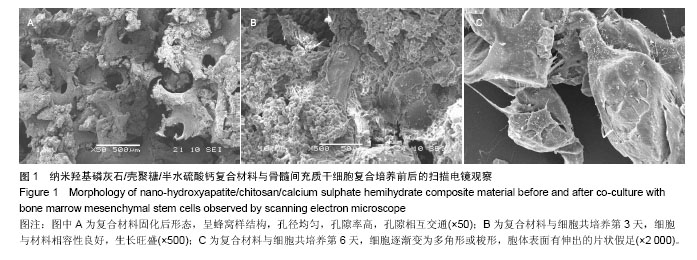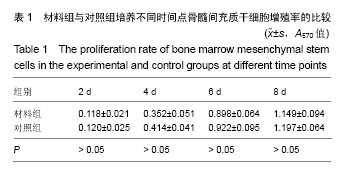| [1] Pan Z,Ding JD.Poly(lactide-co-glycolide) porous scaffolds for tissue engineering and regenerative medicine.Interface Focus. 2012;2(3):366-377.
[2] Park SH,Park DS,Shin JW,et al.Scaffolds for bone tissue engineering fabricated from two different materials by the rapid prototyping technique: PCL versus PLGA.J Mater Sci Mater Med.2012;23(11):2671-2678.
[3] Wang Z,Li M,Yu B,et al.Nanocalcium-deficient hydroxyapatite-poly(e-caprolactone)-polyethylene glycol-poly (e-caprolactone) composite scaffolds.Int J Nanomed.2012;7: 3123-3131.
[4] De Santis R,Gloria A,Russo T,et al.A basic approach toward the development of nanocomposite magnetic scaffolds for advanced bonetissue engineering.J Appl Polym Sci.2011; 122(6):3599-3605.
[5] Walsh WR,Chapman-Sh eath PJ,Cain S,et al.A resorbable porous ceramic composite bone graft substitute in a rabbit metaphyseal defect model.J Orthop Res.2003;21:655-661.
[6] Kelly CM,Wilkins RM,Gitelis S,et al.The use of a surgical grade calcium sulfate as a bone graft substitute: results of a multicenter trial. Clin Orthop.2001;382:42-50.
[7] Shigeru S,Tomihisa K,Tomoyuki S.Osteogenic response of rabbit tibia to hydroxyapatite particle-Plaster of Paris mixture. Biomaterials.1998;19:1895-1900.
[8] Nilsson M,Wang JS,Wielanek L,et al.Biodegradation and biocompatability of a calcium sulphate-hydroxyapatite bone substitute.J Bone Joint Surg.2004; 86B:120-125.
[9] Nilsson M,Wielanek L.Factors influencing the compressive strength of an injectable calcium sulfate~hydroxyapatite cement.JMater Sci Mater Med. 2003;14:399-404.
[10] Dominique J,Reza S,David V,et al. Schaeffer Chitosan scaffolds: Interconnective pore size and cartilage engineering. Acta Biomaterialia.2006;2(3):313-320.
[11] Wang A,Ao Q,Cao W,et al.Porous chitosan tubular scaffolds withknitted outer wall and controllable inner structure for nerve tissueengineering.J Biomed Mater Res A.2006;79(1): 36-46.
[12] Manjubala I,Scheler S,Bssert J,et al.Mineralisation of chitosan scaffolds with nano-apatite formation by double diffusion technique.Atca Biomater.2006;2(1):75-84.
[13] 武海军,银和平,李树文,等.密度梯度离心和贴壁筛选法分离培养兔骨髓间充质干细胞的形态学观察[J].中华临床医师杂志(电子版),2012,6(22):7261-7265.
[14] Frame JW.Ridge augmentation using solid and porous hydroxyapatite particleswith and without autogenous bone or plaster.J Oral Maxiallofac Surg.1987;45:771-777.
[15] Cabañas MV,Rodriguez-Lorenzo LM,Vallet-Regi M.Setting behavior and in vitro bioactivity of hydroxypatite/calcium sulfate cements.Chem Mater.2002;14:3550-3555.
[16] 郝和平,奚廷斐,卜长生.医疗器械监督管理和评价[M].北京:中国医药科技出版社, 2001:233-235.
[17] 温波,陈治清,蒋引珊,等.纳米羟基磷灰石对成骨细胞功能代谢影响的研究[J].生物医学工程学杂志,2005,22(3):463-467.
[18] Delloye C,Cnockaert N,Cornu O.Bones ubstitutes in 2003: an overview.Acta Orthop Belg.2003;69:1-8.
[19] 葛亮,苟三怀,杨四川,等.注射式复合纳米人工骨的生物相容性和降解性能的实验研究[J].第二军医大学学报,2006,27(10): 1121-1126.
|



